Related Research Articles

Otto Jahn, was a German archaeologist, philologist, and writer on art and music.

Georg Michaelis was the chancellor of the German Empire for a few months in 1917. He was the first chancellor not of noble birth to hold the office. With an economic background in business, Michaelis' main achievement was to encourage the ruling classes to open peace talks with Russia. Contemplating that the end of the war was near, he encouraged infrastructure development to facilitate recovery at war's end through the media of Mitteleuropa. A somewhat humourless character, known for process engineering, Michaelis was faced with insurmountable problems of logistics and supply in his brief period as chancellor.
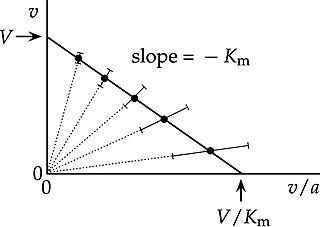
In biochemistry, an Eadie–Hofstee plot is a graphical representation of the Michaelis–Menten equation in enzyme kinetics. It has been known by various different names, including Eadie plot, Hofstee plot and Augustinsson plot. Attribution to Woolf is often omitted, because although Haldane and Stern credited Woolf with the underlying equation, it was just one of the three linear transformations of the Michaelis–Menten equation that they initially introduced. However, Haldane indicated latter that Woolf had indeed found the three linear forms:
In 1932, Dr. Kurt Stern published a German translation of my book Enzymes, with numerous additions to the English text. On pp. 119–120, I described some graphical methods, stating that they were due to my friend Dr. Barnett Woolf. [...] Woolf pointed out that linear graphs are obtained when is plotted against , against , or against , the first plot being most convenient unless inhibition is being studied.

The Leipzig Trade Fair is a major trade fair, which traces its roots back for nearly a millennium. After the Second World War, Leipzig fell within the territory of East Germany, whereupon the Leipzig Trade Fair became one of the most important trade fairs of Comecon and was traditionally a meeting place for businessmen and politicians from both sides of the Iron Curtain. Since 1996, the fair has taken place on the Leipzig fairgrounds, located about 7 kilometres (4.3 mi) north of the city centre.

Leonor Michaelis was a German biochemist, physical chemist, and physician, known for his work with Maud Menten on enzyme kinetics in 1913, as well as for work on enzyme inhibition, pH and quinones.

Michael Ettmüller was a German physician, born at Leipzig.
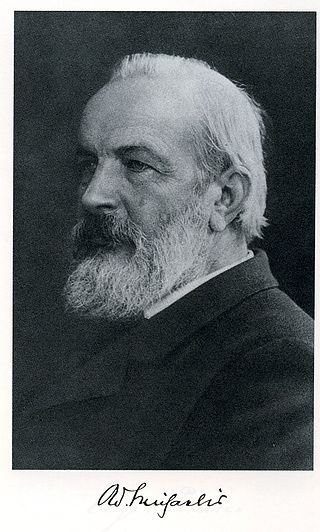
Adolf Michaelis was a German classical scholar, a professor of art history at the University of Strasbourg from 1872, who helped establish the connoisseurship of Ancient Greek sculpture and Roman sculpture on their modern footing. Just at the cusp of the introduction of photography as a tool of art history, Michaelis pioneered supplementing his descriptions with sketches.

Sir Maximillian Michaelis, was a South African financier, mining magnate, benefactor and patron of the arts.
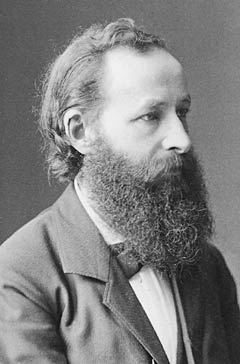
Robert Michaelis von Olshausen was a German obstetrician and gynecologist. He was born in Kiel and died in Berlin. He was the son of Justus Olshausen (1800–82), a professor of Oriental languages at the University of Kiel.

In biochemistry, a Hanes–Woolf plot, Hanes plot, or plot of against is a graphical representation of enzyme kinetics in which the ratio of the initial substrate concentration to the reaction velocity is plotted against . It is based on the rearrangement of the Michaelis–Menten equation shown below:
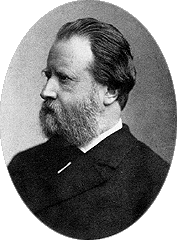
Johannes Adolph Overbeck was a German archaeologist and art historian.

Herr Gott, dich loben alle wir, BWV 130, is a chorale cantata by Johann Sebastian Bach for the Feast of archangel Michael. The oldest known version of the cantata (BWV 130.1) was performed on that feast day in 1724 during Bach's second year in Leipzig. The cantata is scored for SATB soloists and choir, three trumpets, timpani, traverso, three oboes, strings and continuo.

Man singet mit Freuden vom Sieg, BWV 149, is a church cantata by Johann Sebastian Bach. He composed the work in Leipzig for Michaelmas and first performed it in 1728 or 1729. It is the last of his three extant cantatas for the feast.
Johann Friedrich Gräfe was a civil servant and an amateur composer, whose works are still known today.

Günter Jena is a German choral conductor and musicologist. He was the director of church music at St. Michaelis in Hamburg from 1973 to 1997. He founded the festival Bach-Tage Hamburg, and provided music for ballet performances of choreographer John Neumeier at the Hamburg State Opera, including Bach's St Matthew Passion.
Franz Joachim Burmeister was a German Protestant hymn writer.

Leipziger Universitätsmusik refers to music education and performance at the University of Leipzig. Music at the university dates back to its founding of the university in the 15th century. At present, Leipziger Universitätsmusik is the name of several musical ensembles formed by students and professors, and supported by professional musicians, the choir Leipziger Universitätschor, an orchestra, two smaller instrumental ensembles, and a big band.
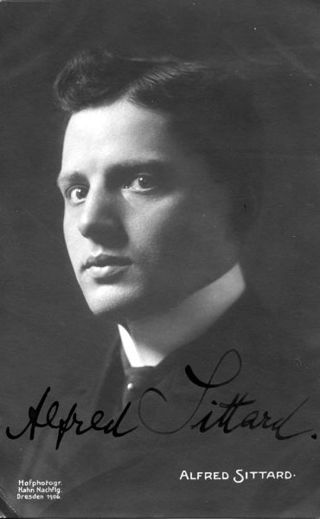
Alfred Sittard was a German cantor, composer of church music and one of the most important organists of his time.

The Oper am Brühl was the first opera house in Leipzig. It existed from 1693 to 1720 and was the second municipal music theatre in Germany, after the Oper am Gänsemarkt in Hamburg. It was initiated by Nicolaus Adam Strungk who saw a potential audience during the three annual trade fairs in Leipzig. An opera house was built, and opened on 8 May 1693. The house flourished when Georg Philipp Telemann directed the opera from 1703 to 1705. Among his operas for the house is Germanicus, premiered in 1704. A collection of 100 excerpts from the operas, Musicalische Rüstkammer, has been explored for background. The building was found in a dangerous state in 1719, was closed in 1720 and demolished in 1729.

Eduard Jacobson was a German dramatist and physician.